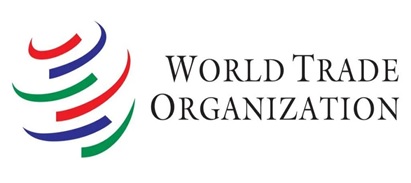13 October, 2025
Duty-Free Tariff Preference (DFTP) Scheme
Sun 26 Oct, 2025
Introduction
India’s Duty-Free Tariff Preference (DFTP) Scheme has emerged as a cornerstone of its pro-development trade policy, aimed at uplifting the world’s poorest nations through equitable access to the Indian market. Recently, the World Trade Organization (WTO) credited India’s DFTP initiative for significantly boosting exports from Least Developed Countries (LDCs), enabling their greater integration into the global trading system.
Background
- The DFTP Scheme was formally launched in August 2008 by the Government of India during the WTO Ministerial Meeting in Geneva.
- The objective was to strengthen South-South cooperation and promote trade inclusivity by providing duty-free and preferential tariff access to products originating from Least Developed Countries (LDCs), as classified by the United Nations (UN).
- India was among the first developing countries to extend such preferential treatment to all LDCs, reflecting its commitment to the Doha Development Agenda and global economic equity.
Objective
The main objective of the DFTP scheme is to:
- Boost exports and economic growth in LDCs.
- Encourage export diversification and industrialization in developing economies.
- Strengthen trade and economic relations between India and LDCs.
- Contribute to global development goals by integrating vulnerable economies into the global market.
Key Features of the DFTP Scheme
| Aspect | Description |
| Launch Year | 2008 |
| Nodal Ministry | Ministry of Commerce and Industry, Government of India |
| Beneficiary Countries | 48 Least Developed Countries recognized by the United Nations |
| Objective | To grant tariff preferences and duty-free access to imports from LDCs into India |
| Nature of Benefits | Duty-Free or preferential tariff access on a wide range of products |
| WTO Recognition | Cited as a model for South–South trade cooperation and inclusive development |
Coverage of Products
Under the DFTP scheme, products from LDCs are granted duty-free access to the Indian market across multiple sectors:
- Agricultural Products: Fruits, vegetables, spices, grains, and edible oils.
- Textiles and Garments: Fabrics, clothing, and handwoven materials.
- Leather Goods: Bags, accessories, and garments.
- Handicrafts: Jewelry, traditional artworks, and local crafts.
- Minerals and Metals: Gold, diamonds, and raw materials.
This wide coverage enables LDCs to leverage their natural and cultural strengths to tap into one of the world’s largest consumer markets.
Significance of the Scheme
1. Empowerment of LDCs:
By reducing trade barriers, the scheme allows LDCs to compete globally and expand their export markets.
2. Boost to India’s Global Image:
The DFTP demonstrates India’s leadership role in supporting equitable global trade and South–South cooperation.
3. Trade Diversification:
It helps LDCs move away from dependence on a few commodities and develop varied export baskets.
4. Inclusive Growth:
The initiative aligns with the Sustainable Development Goals (SDGs), particularly Goal 17 (Global Partnerships).
5. WTO Acknowledgment:
The WTO recognized India’s DFTP Scheme as a successful model that fosters fair and inclusive global trade practices.
Impact
- Since its inception, the DFTP scheme has resulted in a steady increase in exports from LDCs to India.
- African nations like Tanzania, Mozambique, Ethiopia, and Madagascar have benefited notably, especially in sectors such as textiles, agricultural produce, and minerals.
- The program has also enhanced diplomatic and economic relations between India and the LDC group, positioning India as a responsible global economic partner.
Conclusion
- The Duty-Free Tariff Preference (DFTP) Scheme is not just a trade mechanism but a reflection of India’s vision of inclusive globalization.
- It empowers LDCs by enabling them to integrate into the global economy on fairer terms. As the global trade environment evolves, India’s DFTP initiative continues to serve as a model for other emerging economies to emulate, promoting equitable trade and sustainable development.
World Trade Organization (WTO)
- Established: 1 January 1995 (Succeeded GATT – General Agreement on Tariffs and Trade)
- Headquarters: Geneva, Switzerland
- Members: 164 member countries (as of 2025)
- Director-General: Dr. Ngozi Okonjo-Iweala (Nigeria)


















